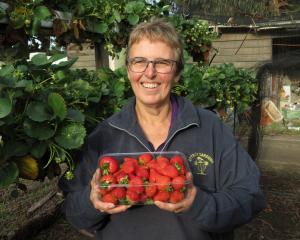
Department of Conservation (Doc) coastal Otago biodiversity ranger Jim Fyfe says the discovery of the sea lion and her pup so far up the Clutha River is "new, unexpected and exciting behaviour" for the species.
"We know pregnant females push inland to escape the attention of males at this time of year [but] never thought they might choose a site this far from the sea."
The sea lion mother and pup were discovered late last month on the Tuapeka sheep and beef farm of Pam and Graham Hunter.
"We had a couple of French Caledonian farmstay guests come back from a walk by the river very excited to show us a video on their phones," Mrs Hunter said.
"We’d heard rumours of a ‘seal’ swimming around the Tuapeka punt but when we came down through a paddock of cattle to find this sea lion pup in the bush by the riverside we were absolutely incredulous — it’s unprecedented."
Doc was notified and arrived the next day to examine the animal.

The mother was believed to be one of the Catlins sea lion population, known as "Jade", Mr Fyfe said.
If so, "thinking outside the box" appeared to run in the family, as Jade herself made headlines when she was born underneath a Kaka Point crib in 2016, he said.
"We’ve checked in on them regularly and seen the pup playing in the river like a child," Mrs Hunter said.
"It felt like a real blessing after a few stressful weeks, but we agreed to help keep a lid on it until [today] while Doc worked through their protocols.
"We felt a bit torn between sharing and caring, because while they’re safe here on private land we wanted boaties to know they’re there and take care around them,” Mrs Hunter said.
Mr Fyfe said because the animals came so close to extinction on the mainland, there was "a lot we don’t know about their behaviour".
"This mother raises a lot of questions for us," he said.
"How are they foraging and are they eating freshwater fish?"
Mr Fyfe said he expected the pup would remain in the area for the next few weeks and it would be interesting to see how the mother and pup used the river.
Doc says New Zealand sea lions (pakake) have "nationally vulnerable" status.
Most of an estimated 12,000 animals live on subantarctic islands, but small populations in Stewart Island, Southland, and Otago are growing.













